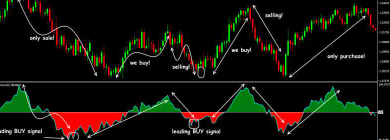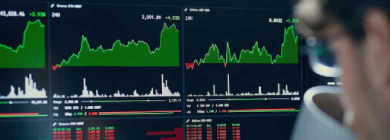Chinese stock markets rallied following the announcements, with the CSI 300 up 15% and the Shanghai Composite up 12%. Some economic commentators suggested that these measures could help China stem slow GDP growth and shift the economy from investment to consumption. However, as India’s weighting in the MSCI AC World Investable Market Index has recently overtaken China, some worry that foreign investors may now reallocate more funds to China.
The final investment results will depend on whether China successfully rebuilds its economy or follows the path of Japan, where the “lost decade” (or, as some say, the “lost generation”) caught investors off guard and tested their patience. In today’s article, we will explore the key areas where China is seeking to diverge from the Japanese experience and the potential implications of foreign investment flows into India.
To begin with, it is important to understand what China is trying to avoid. Japan experienced a prolonged period of stagnation from the late 1980s to the early 2020s, marked by low growth, deflation, and the limited effectiveness of traditional interventions such as monetary easing and fiscal stimulus. The stagnation was so severe that, to date, Japan’s Nikkei 225 index still trades below its 1989 peak, briefly surpassing it in 2024.
This begs the question: How did Japan fall into such a fate? Akio Mikuni and R. Taggart Murphy, in their book Japan’s Policy TrapArgues that Japan’s postwar economic “miracle” is closely linked to its current financial struggles.
The roots of Japan’s economic mindset can be traced back to the Meiji Restoration of 1868, which ended the Tokugawa Shogunate and began the modernization of the nation. This change established Japan’s centralized economic system, prioritizing production and exports over profitability and market efficiency. Postwar institutions, such as the Ministry of Finance (MOF) and the Bank of Japan (BOJ), reinforced this approach by supporting export-driven firms and allocating credit based on policy objectives rather than market forces, leading to inefficiencies and financial imbalances. .
Japan’s trade strategy prioritizes trade surpluses and yen suppression to boost exports, but this focus leads to overinvestment in unprofitable sectors. An emphasis on saving over consumption tied up wealth in industrial investments, fueling asset bubbles in real estate and equities. When these bubbles burst in the 1990s, Japan faced a banking crisis, deflation, and an accumulation of bad loans. Despite efforts to stimulate demand, monetary policy remained constrained by a focus on managing trade surpluses. Resistance to market-based reforms further hinders innovation, leaving Japan’s economic system poorly equipped to adapt to globalization.
However, today’s China is significantly different from the Japan of the 1980s. Let’s see how China is learning from Japan’s mistakes and looking to improve.
1. Economic Growth and Policy Adjustment: China’s projected GDP growth for 2024 is 4.7%, slowing to 4.3% in 2025, reflecting a slowdown compared to previous decades but still higher than Japan’s post-bubble stability. In contrast to Japan’s slow and reform-resistant response to the stagnation of the 1990s, China is actively adjusting its policies with measures such as easing monetary and fiscal intervention, although concerns remain about the effectiveness of these actions.
2. Monetary Policy and Inflation: China’s CPI inflation forecast for 2024 is 0.5%, with PPI at -1.6%, similar to Japan’s deflation during its lost decades, which hampered recovery. However, unlike Japan’s focus on low interest rates to boost exports, leading to more investment, China is prioritizing a balance between domestic consumption and investment.
3. Domestic Demand Vs. Export Driven Growth: China is increasingly focusing on domestic consumption and services, with growth in sectors such as new energy vehicles. Unlike Japan, which maintained an export-led model at the expense of domestic demand, China is actively working to stimulate consumption and reduce its dependence on exports.
4. Bureaucratic Control and Policy Flexibility: Both China and Japan have strong bureaucratic systems, but China shows more flexibility in policy adjustments compared to Japan’s rigidity in the 1990s. While Japan’s bureaucratic resistance has long been stagnant, China is cautiously implementing reforms to boost consumption and improve domestic credit.
5. Asset Bubbles and Financial Imbalances: China is facing a housing downturn similar to the Japanese bubbles of the 1980s, but unlike Japan, which experienced a prolonged banking crisis due to bad loans, China is actively managing housing market risks to prevent a similar outcome.
That said, reorienting the economy from an investment-driven model to a consumption-focused one is an exceptionally challenging task. Given that the Japanese experience remains fresh in investors’ minds, China’s margin for error is relatively small. However, the Chinese Frontline index offers an attractive entry point for those confident in the success of recent policy measures, with the CSI 300 index down more than 40% from its 2021 peak.
In contrast, Indian markets are trading near all-time highs, while offering strong long-term prospects. Foreign institutional investors, who recently turned positive towards India after significant outflows in 2022, now face a tough decision. Domestic investors, many of whom cannot invest directly in Chinese markets, will be watching these developments closely to assess the impact on the sector’s circulation in India.
(You can now subscribe to our ETMarkets WhatsApp channel)



































